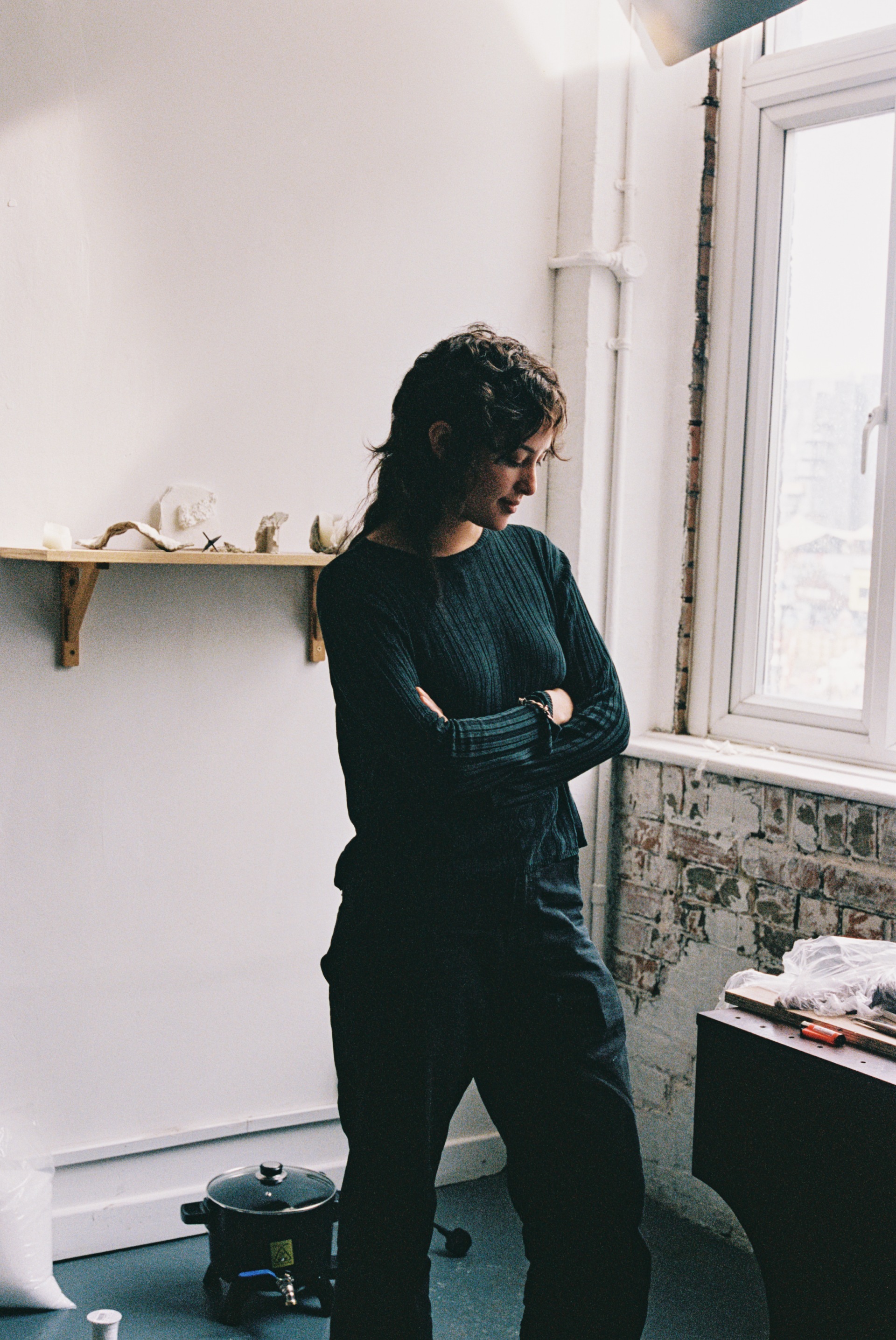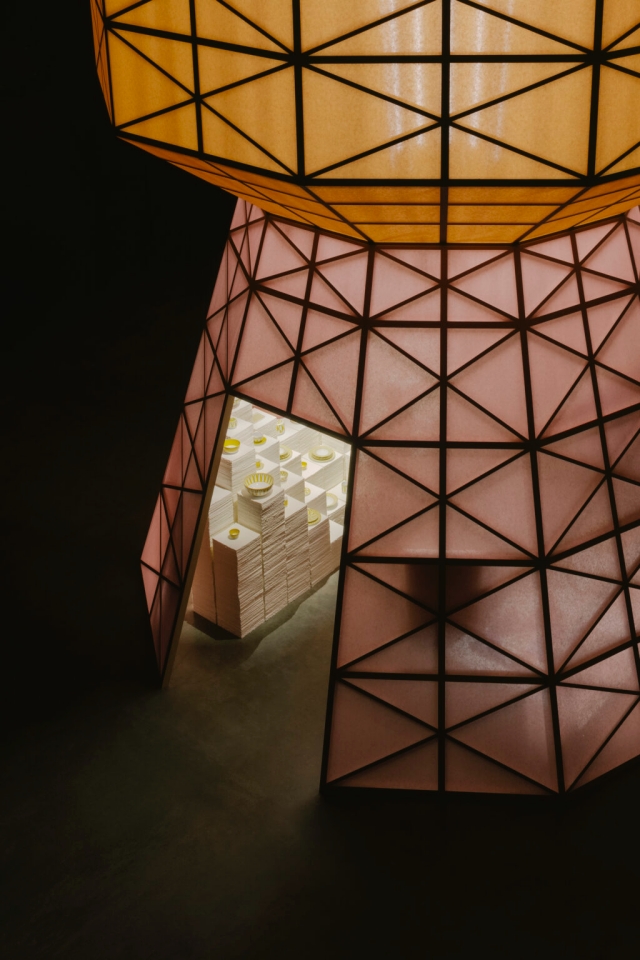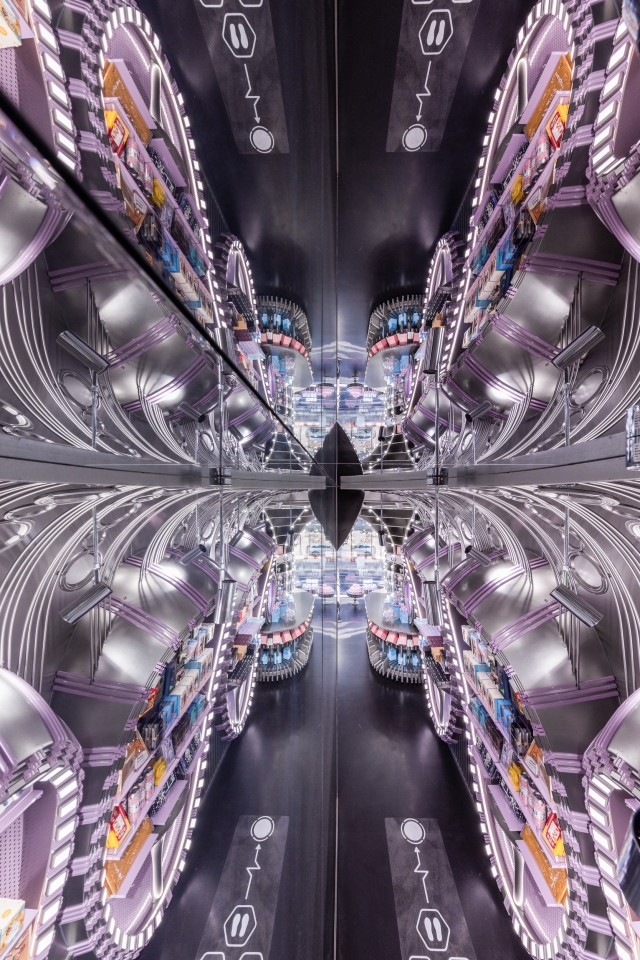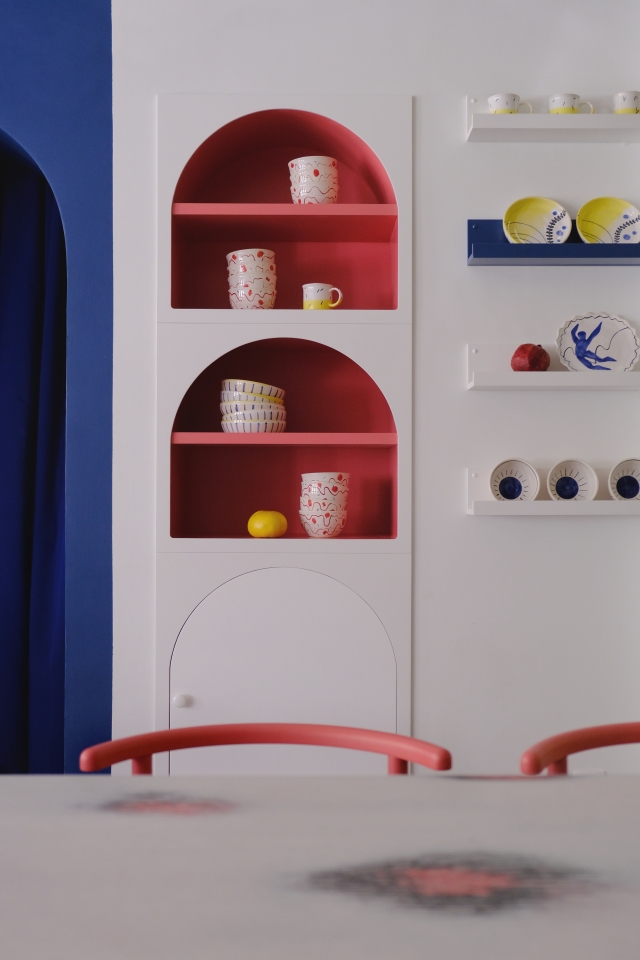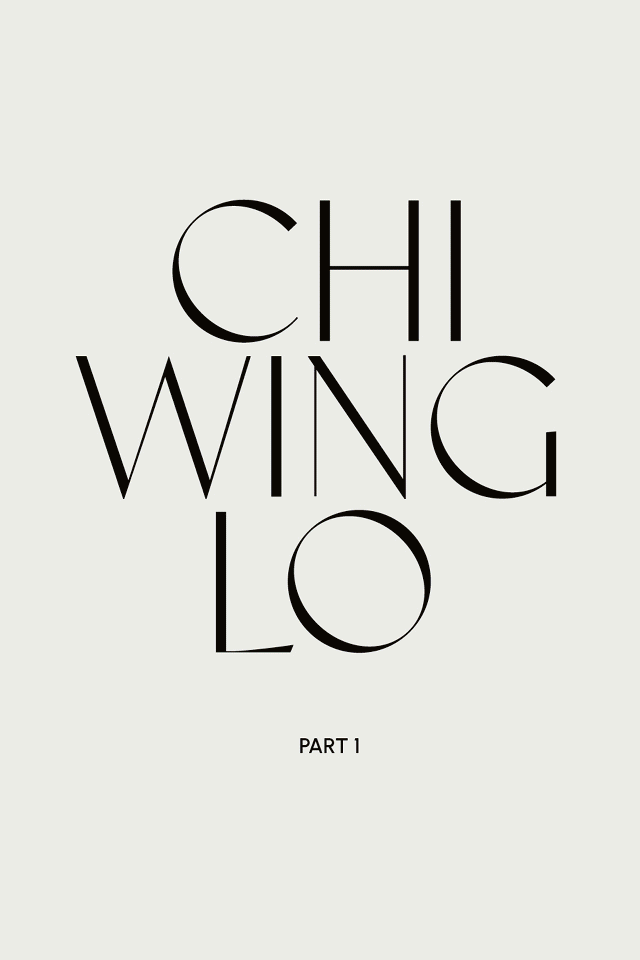Miya Kosowick is a half-Japanese Canadian artist based in London, United Kingdom. She shares, “I navigate between the controlled and natural world through the exploration of the ways in which inside and outside (uchi-soto) relationships manifest through space and identity. Uchi-soto (内外), which translates to “inside” and “outside” is a Japanese philosophical concept that defines not only physical space in Japanese architecture but also social dynamics, akin to ingroups and outgroups. I search for the inbetween of this binary. My installations build a world around my paintings; the paintings themselves becoming portals to an imagined elsewhere, cohabiting with sculptural objects from fragmented histories. Through combining found and made objects, I investigate the subjective and fluctuating perceptions of maintenance, heritage and cultural authenticity.”
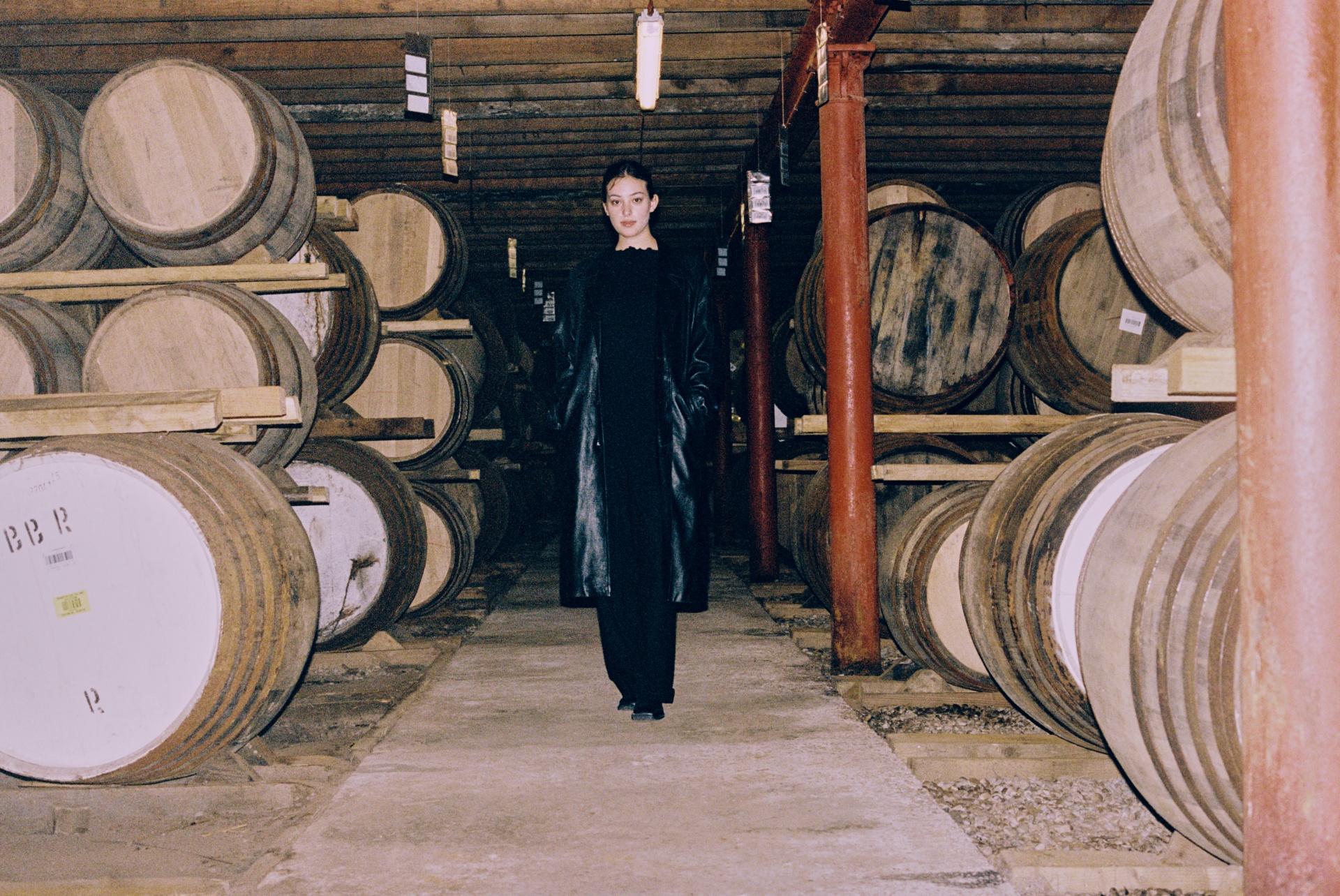
She continues, “A muted colour palette has emanated from the environments of my upbringing; an amalgamation of the urban, rural, and natural landscapes of British Columbia, Japan, and the UK. Through simple abstract and figurative gestures on fragile sheets of rice paper, canvas and wood sealed in wax, I create future archaeological traces and memories leading to an undefined realm outside of time.”
Can you share your background and the beginnings of your creative journey?
My creative journey began with a deep curiosity about identity and belonging—specifically, what it means to be biracial and shaped by two distinct cultural backgrounds. This question led me to pursue a degree in cultural anthropology at university, where I developed a personal epistemology that continues to influence my artistic practice today. Early on, I found it difficult to express the complexities of my identity through traditional forms of communication, like speech or writing. That’s when I turned to art as a tool for research first at Chelsea College of Arts and now as a full-time practicing artist.
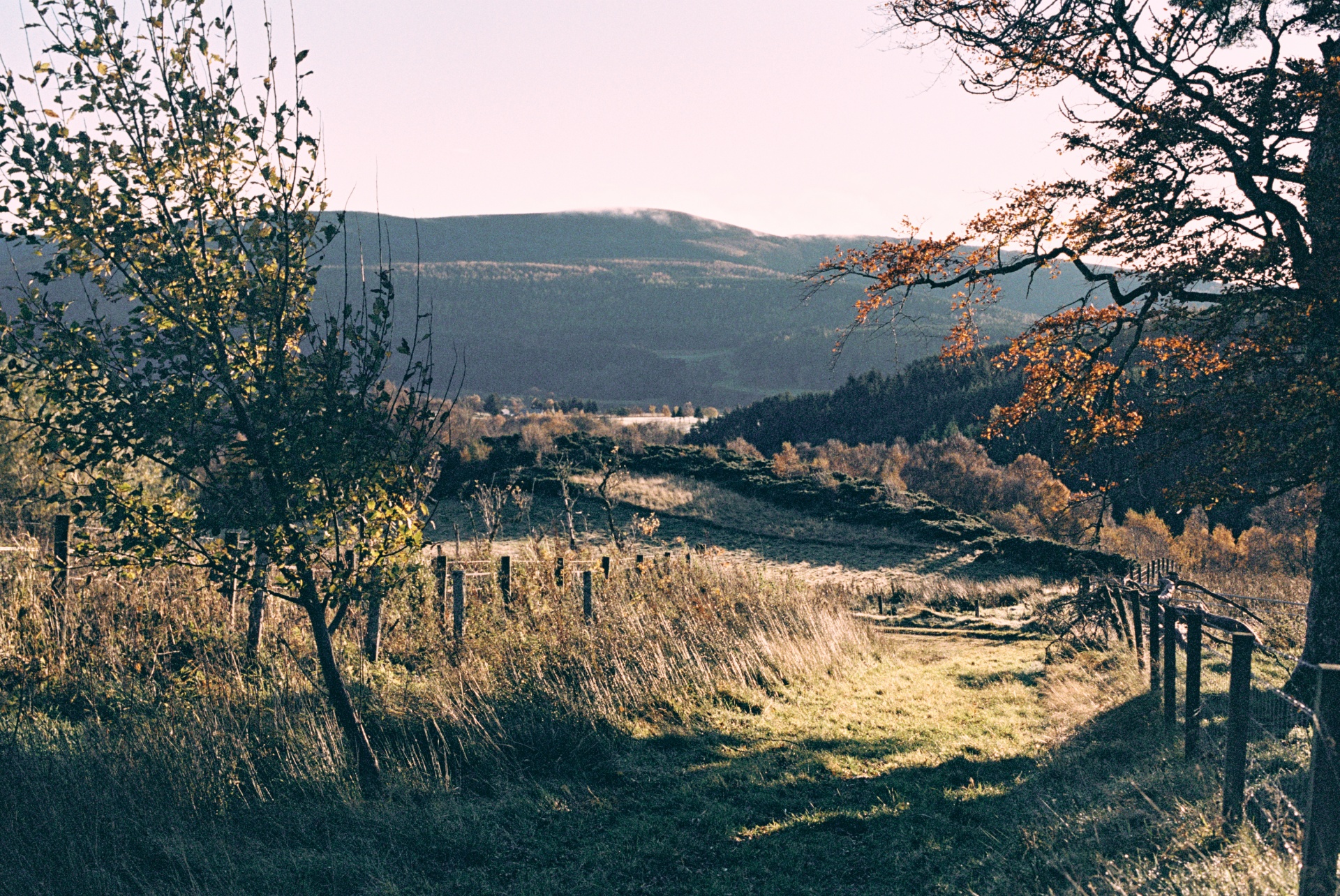
Your work delves into the interplay between controlled and natural environments through the philosophy of uchi-soto (内外). How does this concept influence your artistic practice?
Uchi-soto translates to "inside/outside" in Japanese and is a framework used to define not only architectural spaces but also the dynamics of social in-groups and out-groups. I’ve applied this philosophy to my own exploration of identity, particularly in relation to belonging and not belonging to both sides of my heritage. Uchi-soto challenges the idea of rigid boundaries, and I became fascinated by the potential of dichotomies—such as inside/outside, past/future, control/freedom, private/public, and real/fake—to coexist. Through my work, I aim to create spaces that exist in the in-between, where these boundaries blur.
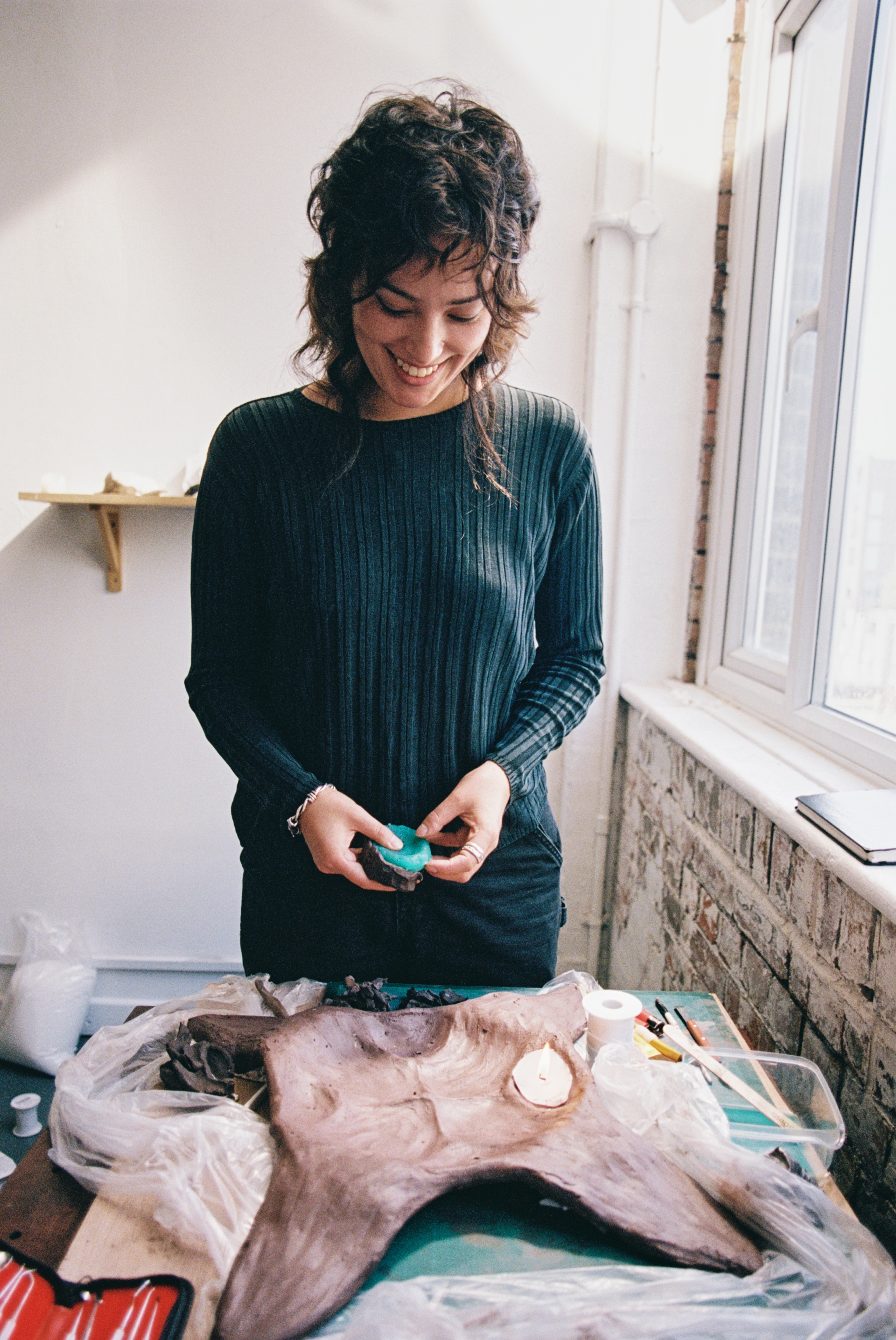
In what ways do you balance and express the relationship between interior and exterior spaces in your artwork?
My exploration of interior and exterior spaces became quite literal by often bringing elements of the outside world into my installations—using materials like rubble, weeds, and dirt—as a way to blur the lines between natural and constructed environments. I also work with found objects that carry fragmented histories, blending them with newly created works. In more self-contained works, such as sculptures and paintings, I explore how interior and exterior exist within the frame, both physically and within its subject-matter. For instance, some of my paintings are upheld by plasma-cut metal brackets or ceramic frames that have a life of their own whilst protecting a painting shielded in wax. These pieces become microcosms, expressing the interplay between self-contained and the spaces that surround them.
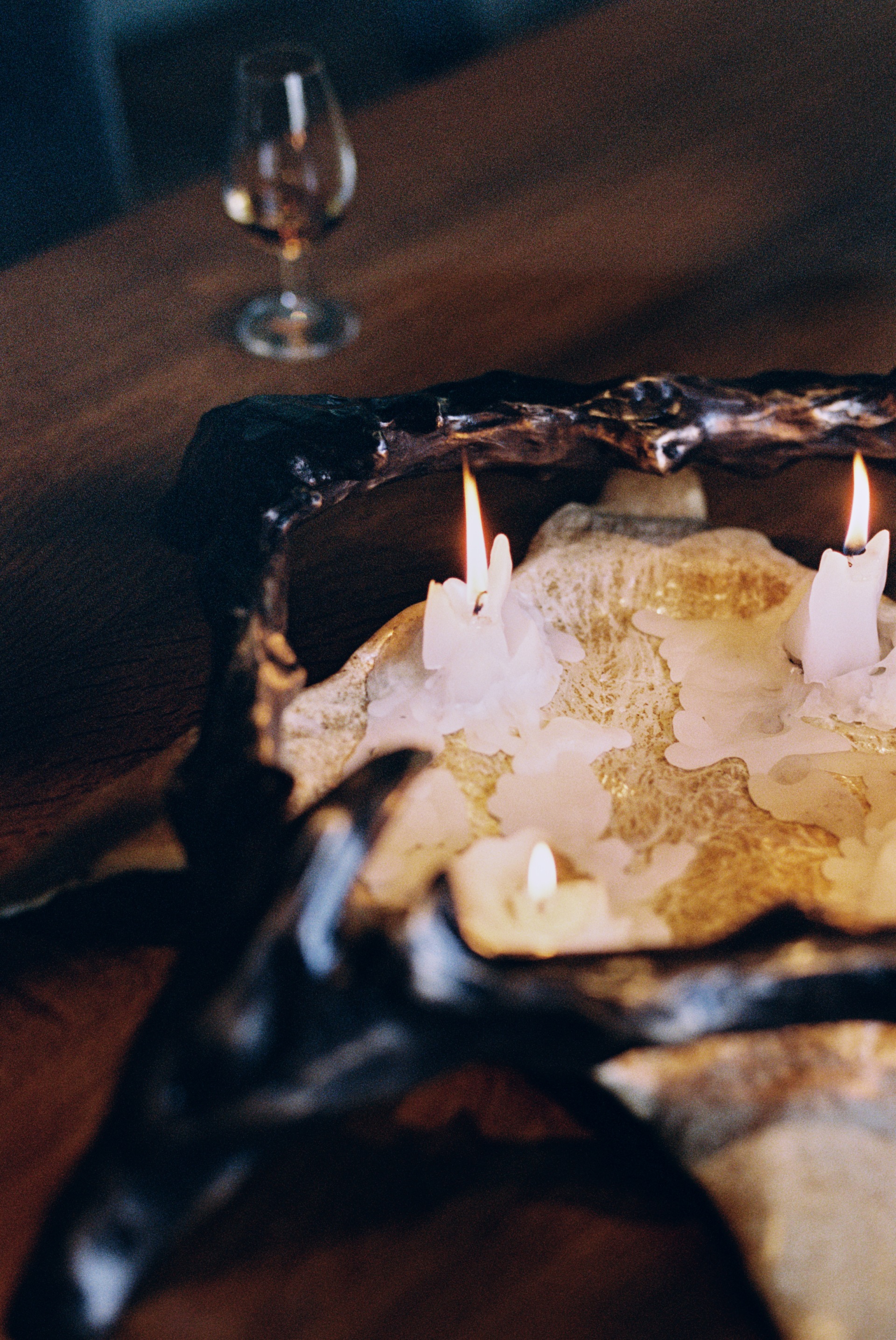
Congratulations on receiving the first annual artist commission from The Glenrothes! Can you tell us more about the inspiration and creative process behind your sculptural centerpiece for this project?
What resonated with me most about The Glenrothes’ whisky-making process in the Scottish Highlands was its delicate balance between elemental forces and human intervention. This sense of balance became a central theme in my sculpture, as it mirrored my broader artistic exploration of equilibrium. I was drawn to the slow, meticulous process involved in crafting whisky, which parallels the care and patience required in my own practice. The materials I chose for the sculpture were deliberately selected to reflect this slow, thoughtful approach, embodying the process of transformation and the deep time that both whisky and art require. Much like The Glenrothes has created a sanctuary where the luxury of time can unfold in both production and enjoyment, this work embodies those values in its material journey and in the experience it offers. The piece will evolve in response to the environment and the passage of time, just as whisky does, inviting the viewer to witness this quiet transformation firsthand.
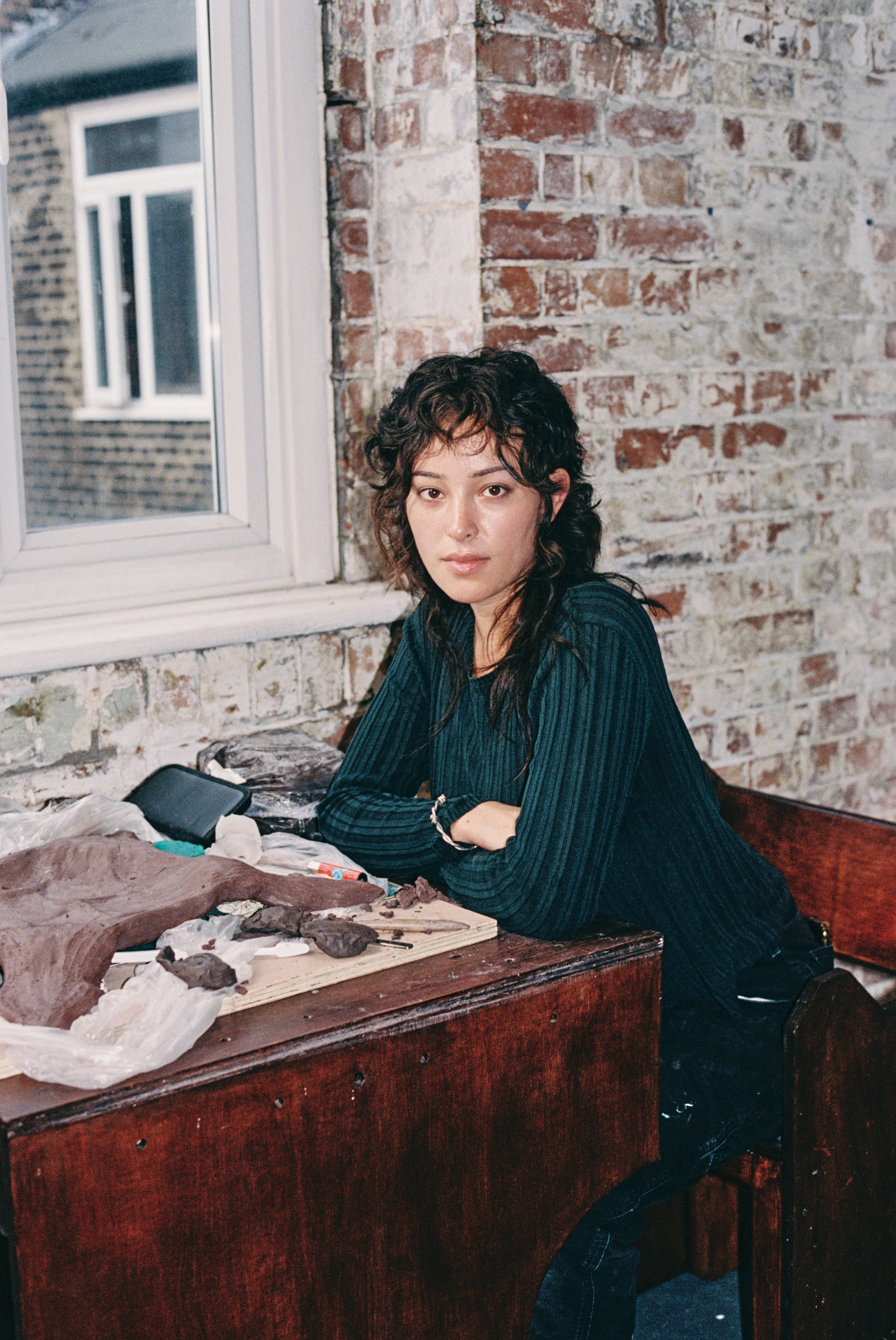
Your recent work conveys a message of hope in our polarized world. How do you approach expressing such themes in your art?
In times of uncertainty, this work is about leaning into the unknown in both the way it was made as well as during its activation (while the flames are alight). The unpredictability of the wood firing process, combined with the spontaneous marks left by melting wax, reflects the ever-shifting nature of our cultural landscape and our relationship to the natural world. These elements provide tensions within the work, yet they also offer possibility. The work can be seen as a gesture of resilience—an exploration of how we can find meaning in chaos, creating new paths.
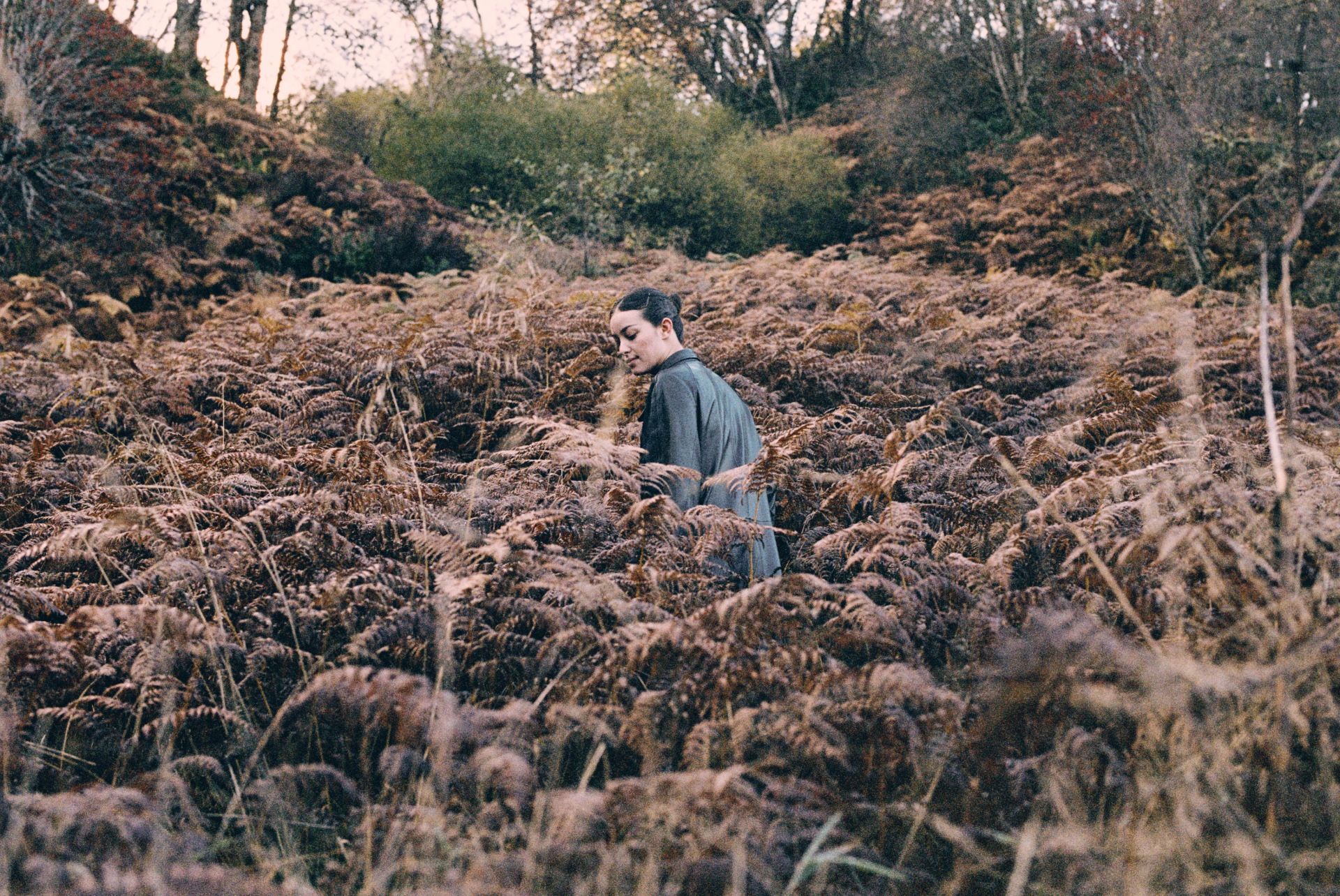
How has your Japanese-Canadian heritage shaped your artistic vision and the narratives you explore?
Growing up with two geographically and culturally distinct heritages has been a powerful influence on my practice. This duality naturally led me to explore the tension between cultural binaries, such as tradition and modernity, East and West, belonging and alienation. My work often reflects this negotiation between these opposing forces, examining how they inform and shape identity. I’m particularly interested in the spaces between these binaries, where new forms of understanding can emerge.
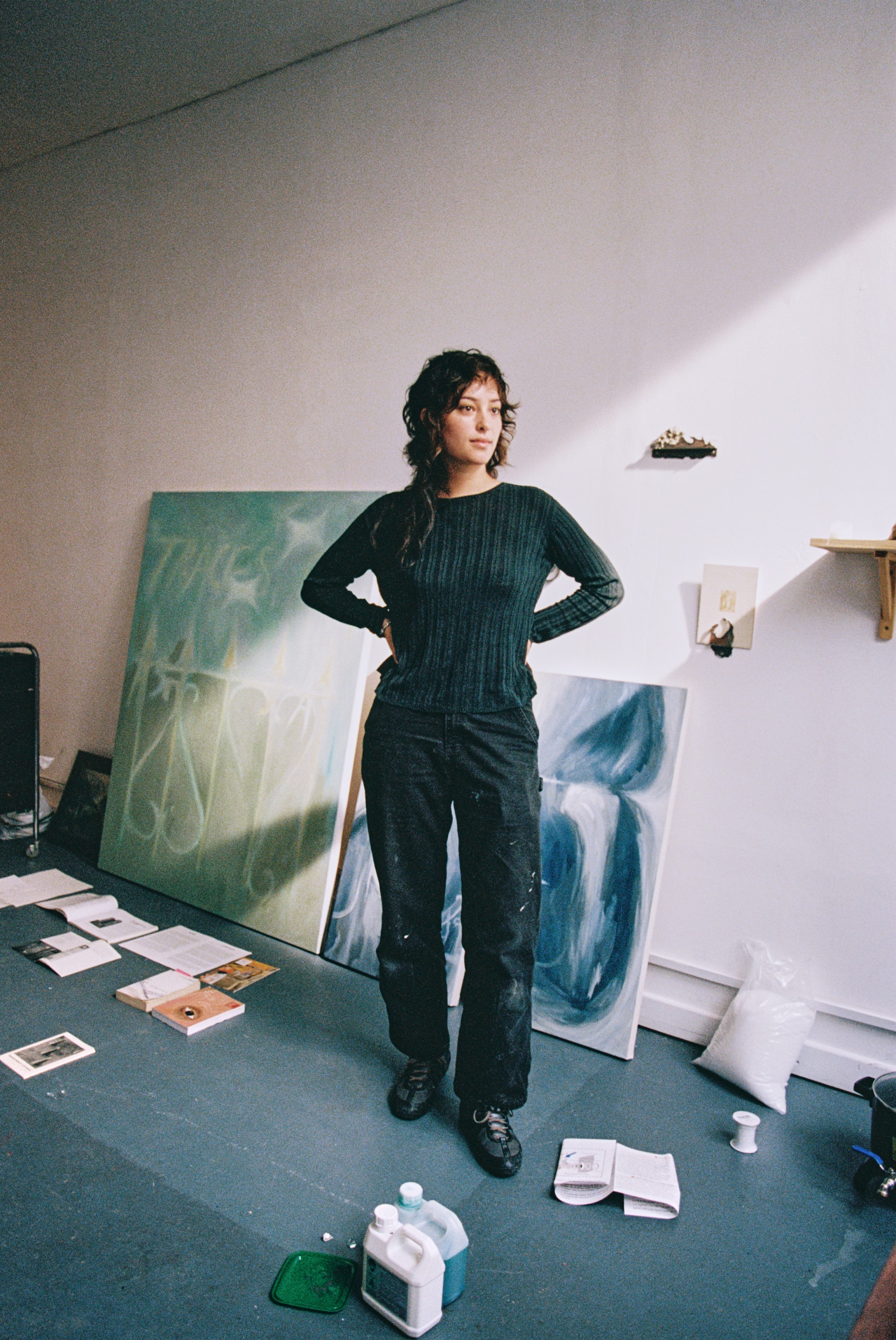
Your art often navigates the “in-between” of binaries. How do you capture and express this liminal space in your creations?
I capture and express this liminal space by incorporating elements of both uchi and soto - as well as other thematic opposites - into my work. By allowing these contradictions to coexist, I create environments where boundaries become fluid, offering a space of transformation. This process of world-building allows me to create a portal to an "elsewhere," a place that doesn’t adhere to conventional definitions or rigid categories. It’s a space where ambiguity and complexity can thrive, encouraging viewers to engage with these contrasts in new, unexpected ways.
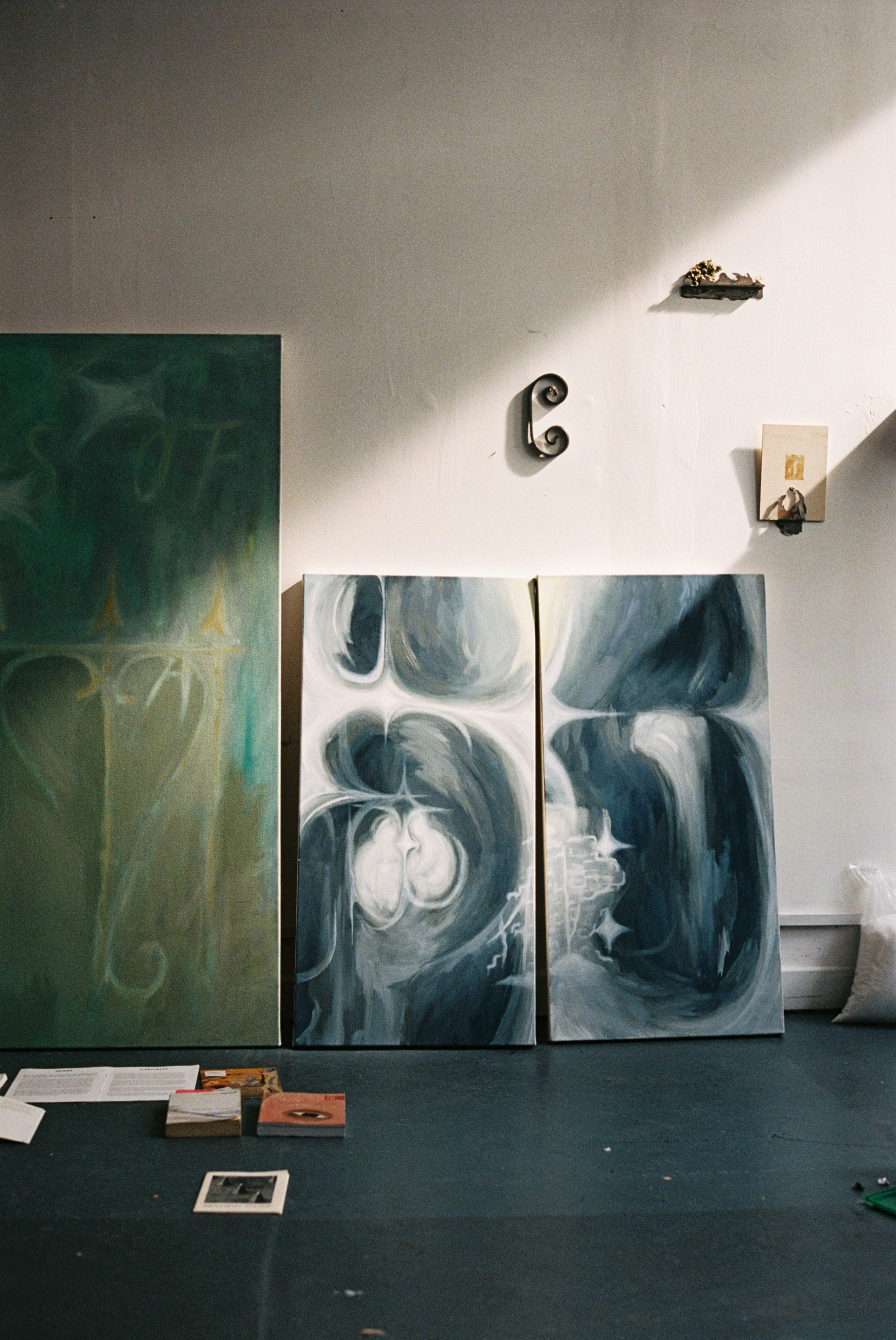
Looking ahead, what new directions or projects are you eager to pursue in your artistic practice?
I really loved my experience working on The Glenrothes project, as it allowed me to immerse myself in new experiences and challenges. Having had the creative liberty and trust to bring an ambitious idea to fruition for a brand whose ethos I admire has been so rewarding. Currently, I’m working on a few installations that will be exhibited at the end of the month at a space organised by a collaborative duo merging radio and art in Hackney. Looking ahead, I’m eager to collaborate with other brands through partnerships involving sculptural commissions, large-scale site-specific installations, or curated restaurants and hotels showcasing my paintings and sculptures. Some of my dreams include showing my work in New York and partnering with fragrance or clothing brands, as I’m deeply inspired by the interplay between art, space, and the sensorial. What excites me most about these collaborations is the opportunity to engage with the unique contexts in which my work is experienced. I hope to expand the reach of my artistic practice, connecting with diverse audiences and creating experiences that resonate deeply across different mediums and industries.
